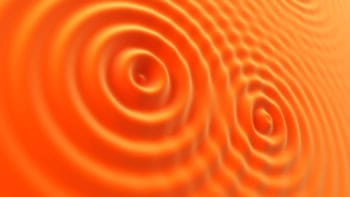
Gravitational-wave signals from binary supermassive black holes could be lurking in data being gathered by the Gaia space telescope. That is the claim of a team of astronomers led by Christopher Moore at the University of Cambridge, who have proposed how Gaia’s astrometric measurements could reveal gravitational waves with extremely low frequencies. The researchers hope to analyse the data in a few years when the astrometric measurements are released by the Gaia team.
The earthbound LIGO and Virgo detectors have famously observed several gravitational waves (GWs) in recent years. Most of these ripples in space–time came from merging pairs of black holes weighing in at tens of solar masses. We know that much larger supermassive black holes (at millions or billions of solar masses) exist and could form binary systems that broadcast GWs. However, the frequency of these GWs would be extremely low – well below the minimum frequency that can be detected by LIGO and Virgo.
Billion stars
Since its launch in 2014 by the European Space Agency, Gaia has been measuring the apparent positions of around a billion stars. In the early 2020s, it will release at least 80 readings for the positions of each star over 5–10 years, giving scientists a vast amount of data. Moore and his team realized that ultralow-frequency GWs would cause the apparent positions of distant stars relative to Earth to oscillate in subtle yet characteristic patterns.
Moore’s team explored this idea by simulating a mock set of Gaia data and injecting it with their predicted GW effects. Even after compressing the data by a factor of a million to reduce the required computational power, the team managed to recover the injected effects. The researchers are now confident that they are ready to begin analysis on Gaia’s data once it is released.
The study is described in Physical Review Letters.



